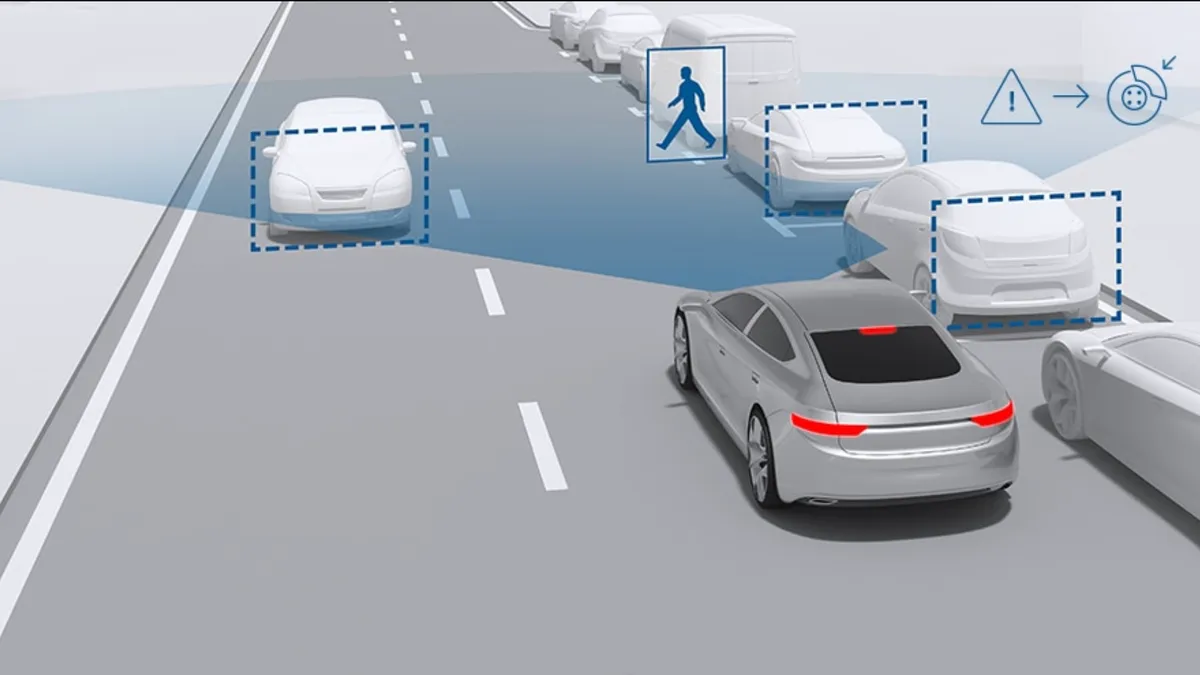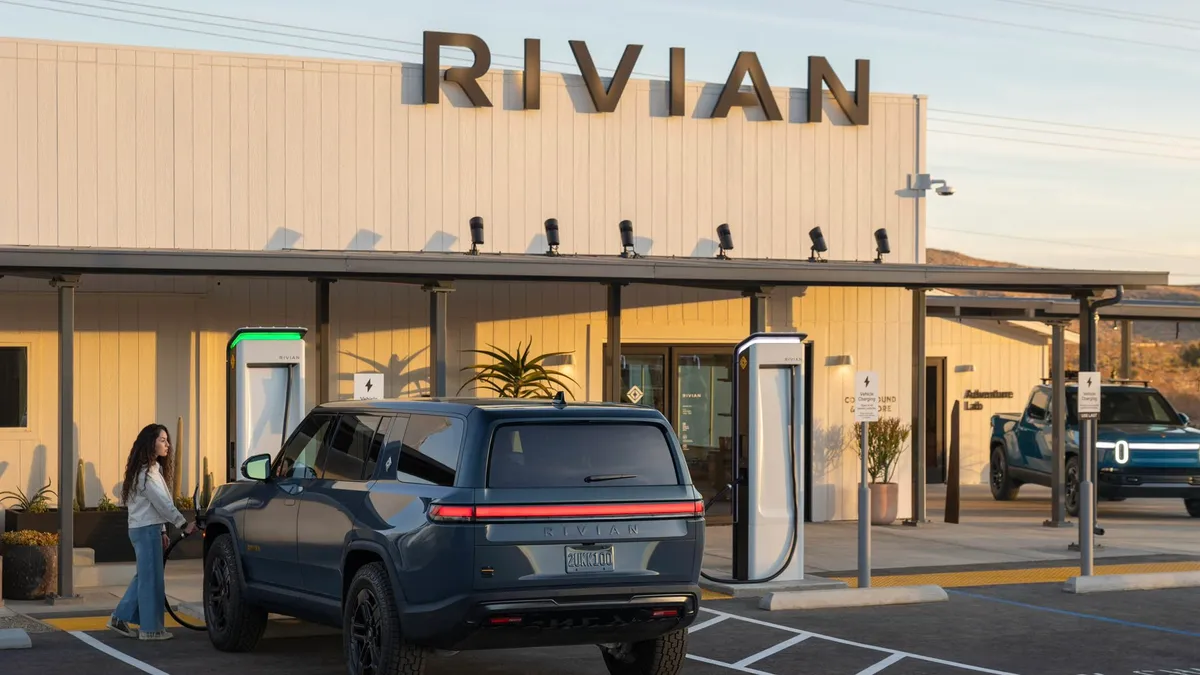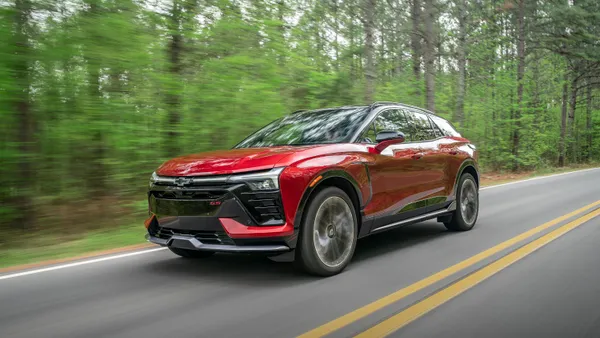Dive Brief:
- The National Highway Traffic Safety Administration has finalized a rule that will require automakers to offer automotive emergency braking and pedestrian braking as standard safety features on nearly all light-duty vehicles sold in the U.S. by 2029.
- These active and passive safety systems automatically apply a vehicle’s brakes to avoid a collision with another vehicle or a pedestrian, even if the driver is not paying attention to the road ahead.
- The NHTSA expects the mandate will save at least 360 lives a year and prevent at least 24,000 injuries annually, as well as reduce property damage and associated costs as a result of accidents.
Dive Insight:
The new standards will require that all vehicles equipped with AEB be able to brake to avoid a collision with a vehicle ahead at speeds up to 62 mph. However, if a collision with another vehicle is imminent, the system must apply the brakes at speeds of up to 90 mph in order to reduce the severity of an impact.
The NHTSA also requires that pedestrian detection systems work in both daylight and at night when it’s harder for a driver to see. If a pedestrian is detected ahead, a vehicle must automatically brake if a driver does not apply the brakes or applies them insufficiently — at speeds up to 45 mph.
The NHTSA ruling is part of the Department of Transportation’s “National Roadway Safety Strategy” announced in January 2022. It’s designed to address an uptick in traffic fatalities and serious injuries to pedestrians caused by inattentive drivers.
The NHTSA requested public comments on the proposed AEB rule last summer, which resulted in push back from some automakers. At the time, Hyundai, Mitsubishi and Porsche said that the proposed rule could lead to false alarms that could potentially cause crashes. The three automakers were the only ones to submit public comments on the proposal.
Despite the concerns, most automakers already offer AEB as a standard or optional feature on many models, which gives them a big jump on meeting the requirements by 2029.
In 2016, the NHTSA and Insurance Institute for Highway Safety announced a voluntary commitment by 20 automakers to include AEB as a standard feature in their vehicles by Sept. 1, 2022. The group of automakers included Ford, General Motors, Honda, Toyota, BMW, Mercedes-Benz and Volkswagen.
“Most new vehicles already come with AEB, and we expect that many cars and light trucks will be able to meet this standard ahead of the deadline, meaning even more lives will be saved thanks to this technology,“ said NHTSA Deputy Administrator Sophie Shulman in a press release.
Hardware for AEB systems typically includes a forward-facing camera paired with image-processing algorithms and AI to identify vehicles and pedestrians. Vehicles also use radar mounted in the front to detect and track the movement of objects. The radar, which can detect objects over 1,000 feet away, can determine the relative speed and direction of people and vehicles with a high degree of accuracy.
In addition to light-duty vehicles, the NHTSA and the Federal Motor Carrier Safety Administration announced a separate proposed rule in June 2023 that would require AEB on heavy vehicles, including tractor trailers. It is still being finalized.












